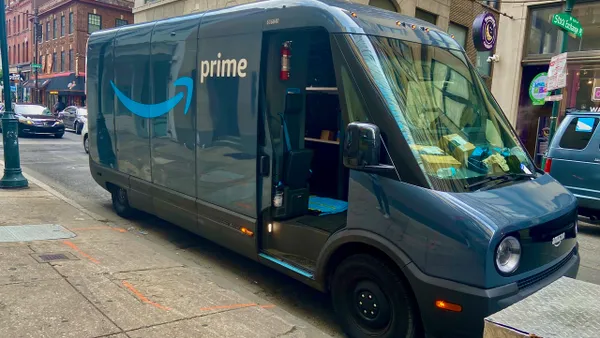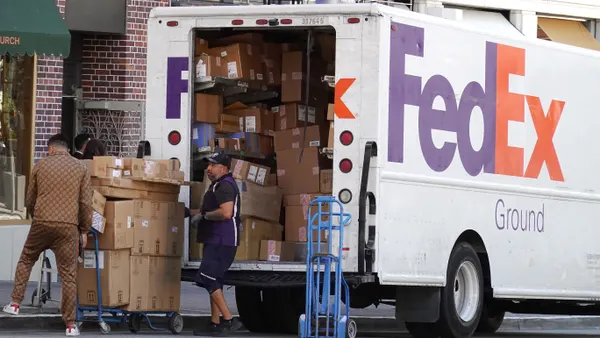Dive Brief:
- UPS has announced peak season surcharges for the 2025 holiday shipping stretch that are higher compared to last year, a move that matches rival FedEx.
- Elevated fees will take effect Sept. 28 for packages that are bulky, oversized or require additional handling. UPS will also start applying demand surcharges on Oct. 26, one of which applies to all Air, Ground Residential and Ground Saver packages. Another version of the demand surcharge targets higher-volume customers.
- All the surcharges reach their highest price from Nov. 23 to Dec. 27, a period when package volumes typically spike as holiday shopping activity kicks into high gear. The fees conclude on Jan. 17, 2026.
UPS 2025 peak season surcharges
| Surcharge name | Services affected | Peak surcharge range per package | Effective dates |
|---|---|---|---|
| Additional Handling | U.S. domestic, U.S. import and U.S. export shipments | $8.25 to $10.80 | Sept. 28 - Jan. 17, 2026 |
| Large Package Surcharge | U.S. domestic, U.S. import and U.S. export shipments | $90.50 to $107 | Sept. 28 - Jan. 17, 2026 |
| Over Maximum Limits | U.S. domestic, U.S. import and U.S. export shipments | $485 to $540 | Sept. 28 - Jan. 17, 2026 |
| Demand Surcharge | UPS Ground Residential, Air and Ground Saver packages | $0.40 to $2.05 | Oct. 26 - Jan. 17, 2026 |
| Demand Surcharge* | Certain UPS Ground Residential, Air Residential, Air Commercial and Ground Saver packages for qualifying customers | $0.40 to $8.75 | Oct. 26 - Jan. 17, 2026 |
*Applies in lieu of the previous Demand Surcharge to customers who are billed for more than 20,000 packages during any week following October 2024. The charge is based on how much their volume deviates from their "baseline" shipping activity.
Dive Insight:
UPS took its time revealing its peak season surcharges this year — the carrier announced last year's holiday levies in July 2024. The shortened window between the fee announcement and when they begin applying resulted in some UPS shippers "scrambling to negotiate peak surcharges," said Nate Skiver, a parcel analyst and founder of LPF Spend Management.
"UPS is trying to find ways to increase revenue per piece," Skiver said on LinkedIn. "So, part of the delay was likely determining the right peak surcharge adjustments. The condensed customer response time was just a nice benefit."
While UPS' announcement didn't elaborate on the timing shift, CEO Carol Tomé said on the company's July 29 earnings call that major shippers are struggling to forecast holiday demand amid an uncertain trade environment.
"So we have about 100 customers that drive 80% of the surge during peak," Tomé said. "Ordinarily, we don't get peak plans until the end of August, and then, final plans at the end of September. I think they're going to be pushing them more into September, as they're working through their plans."
UPS typically institutes a holiday surcharge for large customers that increases in cost as volume climbs, and 2025 is no different. This year's demand surcharge for higher-volume shippers can range from $0.40 to $8.75 per package.
The demand surcharge's exact amount depends on the service used and to what extent the customer's weekly shipping activity deviates from their "baseline" volume in June. However, UPS may use Aug. 31 to Sept. 27 as the baseline if the shipper's average weekly volume during that period is less than 80% of what they shipped in June.
Shippers have several ways to limit the impact of holiday surcharges on their bottom lines, according to parcel pricing experts. Tactics include negotiating holiday discounts with the carrier, tapping alternative delivery providers and incentivizing customers to order during periods of lower fees.















